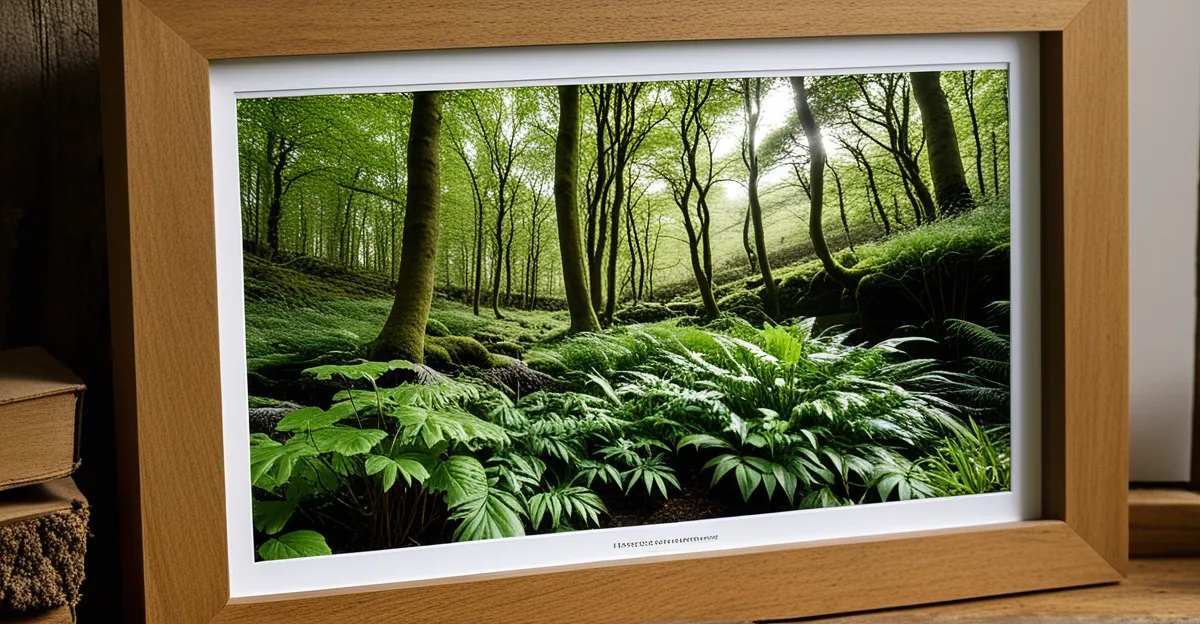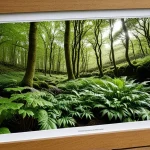Bringing Biophilic Design into Your UK Home: A Comprehensive Guide
Incorporating biophilic design into your UK home is more than just a trend; it’s a way to reconnect with nature and enhance your well-being. Biophilic design, which literally means “love of nature,” is about creating spaces that promote a strong connection between the natural world and your living environment. Here’s how you can seamlessly integrate biophilic elements into your home.
Understanding Biophilic Design
Before we dive into the practical aspects, it’s essential to understand the core principles of biophilic design. This approach is rooted in the idea that humans have an innate tendency to seek connections with nature, a concept known as biophilia.
Also read : Why is Minimalism the Future of UK Home Interiors?
Key Principles of Biophilic Design
- Visual Connection to Nature: This involves creating views of the outdoors, whether through large windows, skylights, or even just a small garden.
- Non-Visual Connection to Nature: This includes elements like natural sounds, smells, and textures that evoke a sense of nature.
- Material Connection to Nature: Using natural materials in your interior design.
- Experience of Natural Processes: Incorporating elements that reflect the changing seasons or natural cycles.
Incorporating Natural Elements into Your Space
One of the most effective ways to bring biophilic design into your home is by incorporating natural elements.
Indoor Plants
Indoor plants are a simple yet powerful way to connect with nature. Here are some benefits and tips for using plants in your biophilic design:
Also read : What are the top sustainable living tips for UK homes?
- Air Quality: Plants like spider plants, peace lilies, and snake plants are known for their air-purifying properties.
- Mood Boost: Studies have shown that being around plants can improve mood and reduce stress.
- Aesthetic Appeal: Choose plants with varying textures and colors to add visual interest to your room.
### Top 5 Indoor Plants for Biophilic Design
- **Snake Plant (Sansevieria Trifasciata)**: Low maintenance and great for air purification.
- **Spider Plant (Chlorophytum comosum)**: Easy to care for and propagates quickly.
- **Peace Lily (Spathiphyllum wallisii)**: Known for its elegant white blooms and air-purifying abilities.
- **Dracaena (Dracaena spp.)**: Versatile and comes in many varieties.
- **Bamboo Palm (Chamaedorea seifrizii)**: Adds a tropical touch and is good for air quality.
Natural Light
Natural light is a crucial element in biophilic design. Here’s how you can maximize it in your home:
- Large Windows and Skylights: These allow ample natural light to enter your space.
- Mirrors: Strategically place mirrors to reflect natural light and make your space feel brighter.
- Light-Colored Interiors: Use light-colored paints and furnishings to reflect natural light.
Natural Materials
Using natural materials in your interior design can create a strong connection to the natural world.
### Natural Materials for Biophilic Design
| Material | Benefits | Examples of Use |
|----------------|--------------------------------------------------------------------------|-----------------------------------------|
| Wood | Warm, natural aesthetic; sustainable | Furniture, flooring, wall paneling |
| Stone | Durable; natural beauty | Countertops, fireplaces, flooring |
| Bamboo | Sustainable; versatile | Furniture, flooring, decorative accents |
| Natural Fibers | Soft, breathable; eco-friendly | Rugs, upholstery, curtains |
| Reclaimed Wood | Unique aesthetic; reduces waste | Furniture, wall decor, flooring |
Creating a Biophilic Interior
A biophilic interior is not just about adding a few plants; it’s about creating a holistic space that connects you to nature.
Water Features
Water features can add a soothing and calming element to your space.
- Indoor Fountains: Small fountains or waterfalls can create a peaceful ambiance.
- Aquariums: Not only visually appealing but also provide a connection to aquatic life.
Outdoor-Indoor Transition
Blurring the lines between your indoor and outdoor spaces can enhance your connection to nature.
- Sliding Glass Doors: Allow for easy transition between indoors and outdoors.
- Outdoor Rooms: Create an outdoor living space with comfortable seating and natural elements.
Practical Tips for Incorporating Biophilic Design
Here are some practical tips to help you incorporate biophilic design into your UK home:
Start Small
You don’t need to overhaul your entire home to incorporate biophilic design. Start with small changes like adding a few indoor plants or using natural materials for your furniture.
Use Nature-Inspired Colors
Choose a color palette that reflects the natural world. Earthy tones like greens, browns, and blues can create a calming and natural ambiance.
Bring in Fresh Air
Ensure good ventilation in your home to bring in fresh air. This can be achieved through proper window placement and using fans to circulate air.
Real-Life Examples and Anecdotes
A Biophilic Home in the Countryside
Imagine a home nestled in the English countryside, surrounded by lush greenery and a small pond. The interior features large windows that offer stunning views of the outdoors, and the living room has a floor-to-ceiling stone fireplace. The furniture is made from reclaimed wood, and the walls are adorned with natural fiber rugs. This home seamlessly integrates biophilic design elements, creating a harmonious connection between the indoors and the natural world.
Urban Biophilic Oasis
In the heart of London, a small apartment can still be a biophilic oasis. By using indoor plants, natural materials for furniture, and a small water feature like a tabletop fountain, you can create a space that feels connected to nature despite the urban surroundings.
Quotes from Experts
- “Biophilic design is not just about aesthetics; it’s about creating spaces that promote well-being and a sense of connection to the natural world.” – Stephen R. Kellert, Author of “Biophilic Design: The Theory, Science and Practice of Bringing Buildings to Life”
- “Incorporating biophilic elements into your home can significantly improve your mental health and productivity.” – Dr. Sally Augustin, Environmental Psychologist
Incorporating biophilic design into your UK home is a journey that can enhance your connection to nature and improve your overall well-being. Whether you live in a rural area or an urban setting, there are countless ways to bring the natural world into your living space. By using natural elements, maximizing natural light, and creating a holistic biophilic interior, you can create a home that feels like a sanctuary connected to the beauty of nature.
Remember, biophilic design is not just about design; it’s about creating a space that nurtures your life and well-being. So, start small, be creative, and let the natural world inspire your home.







